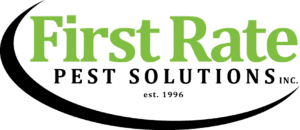Alarming Aspects Of House Mouse And Norway Rat Infestations
Many different types of rodents can be found across New York state, including squirrels, mice, rats, muskrats, chipmunks and even porcupines. While most rodent species can cause problems for humans, only two species are known to be persistent indoor pests in New York state. These two species are commonly known as house mice and Norway rats, and they are both non-native species that first arrived in North America centuries ago. Today, house mice and Norway rats are the most commonly encountered rodent pests in homes throughout the US, and they can be more than just a nuisance to residents.
In addition to house mice, deer mice and white-footed mice also invade homes on occasion in New York, but they do not invade homes nearly as often as house mice and Norway rats. Deer mice and white-footed mice generally avoid human dwellings during the warmer months, but they often invade homes during the fall and winter in order to secure warm shelter. That being said, deer mice and white-footed mice prefer the natural environment where they are capable of surviving cold New York winters.
House mouse and Norway rat infestations are most common during the colder months, but spring and summer infestations are incredibly common. This is because these two pests have become particularly well adapted to thriving within homes and buildings where conditions are generally preferable to the natural environment. House mouse and Norway rat infestations can be costly due to their habit of gnawing on structural wood, plaster, furniture upholstery and electrical wires and cables. For example, house mice are in the habit of shredding fabrics and paper in order to construct nests in wall voids, and Norway rats are strong enough to gnaw on pipes, sometimes resulting in substantial damage to plumbing.
Perhaps most alarming, house mice and Norway rats, as well as the parasites that they carry, transmit numerous diseases to humans, some of which are deadly and have led to epidemics in the past. The feces of both house mice and Norway rats contaminate indoor surfaces, and consuming food tainted with their droppings can lead to a variety of illnesses, such as salmonella. Human exposure to house mouse urine or feces can see humans contract lymphocytic choriomeningitis virus, which often results in meningitis. Rodent excrement is the most medically threatening aspect of mouse and rat infestations, and it is easy to come into contact with rodent feces, as house mice, for instance, expel around 25,000 fecal pellets per day within infested dwellings.
Have you ever discovered rodent excrement within your home?

Comments are closed.